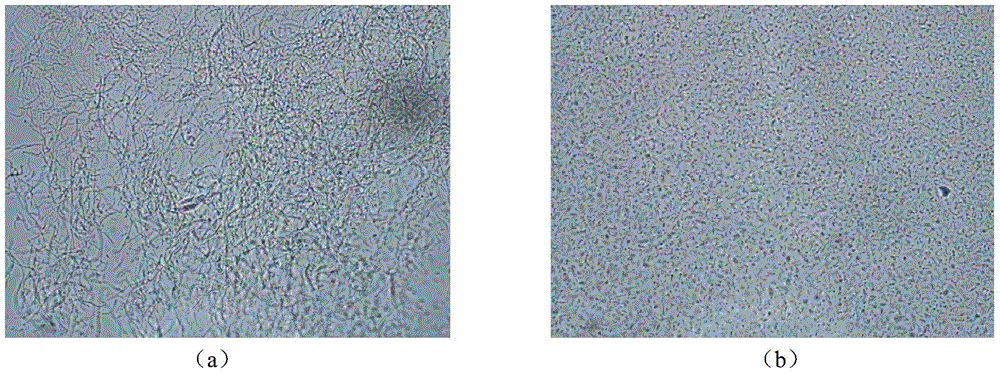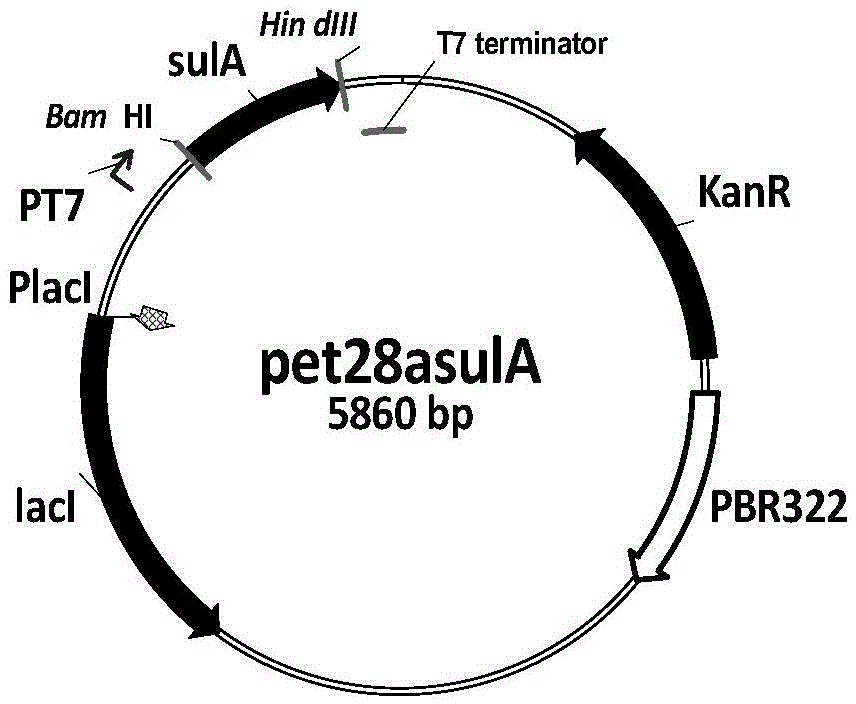Bacterial fiber material made from bacterial cells, and applications thereof
A bacterial fiber and cell technology, applied in bacteria, fiber chemical characteristics, textiles and papermaking, etc., can solve the problems of short production cycle and low cost
- Summary
- Abstract
- Description
- Claims
- Application Information
AI Technical Summary
Problems solved by technology
Method used
Image
Examples
Embodiment approach
[0093] 1. A fibrous material formed by bacterial growth.
[0094] 2. The bacterial fiber according to item 1, which has a length of not less than 50 µm.
[0095] 3. A recombinant bacterial cell used to produce the bacterial fiber described in item 1 or 2.
[0096] 4. The recombinant bacterial cell according to item 3, wherein said recombinant bacterial cell is genetically modified such that it can grow to an increased length compared to the starting bacterium, said genetic modification occurring on the bacterial chromosome and / or on the plasmid.
[0097] 5. The recombinant bacterial cell according to item 4, wherein cell division of the recombinant bacterial cell is inhibited.
[0098] 6. The recombinant bacterial cell according to item 5, wherein expression of a cell division gene in the recombinant bacterial cell is suppressed.
[0099] 7. The recombinant bacterial cell according to item 6, wherein the expression level of one or more cell division genes in the recombinant ...
Embodiment 1
[0333] Example 1 Obtaining bacterial cells and bacterial fibers with increased length by inhibiting the expression of the cell division gene ftsZ
[0334] 1. Obtain recombinant Escherichia coli in which the ftsZ gene on the genome is knocked out and complemented on the plasmid.
[0335] Using the PKD3 plasmid, an auxiliary PKD3 plasmid that complements ftsZ can be obtained by the method described in the following literature (KDaiandJLutkenhaus, ftsZisanessentialcelldivisiongeneinEscherichiacoli.J.Bacteriol.1991,173(11):3500.), thereby obtaining the Escherichia coli genome ftsZ knockout system : E. coli JKD7-1 (PKD3) (publicly available from Tsinghua University). The auxiliary PKD3 plasmid that complements ftsZ is a temperature-sensitive replicon plasmid, which cannot replicate at 42°C. Therefore, this system can be applied to culture at 42°C to obtain bacteria with limited expression of cell division genes.
[0336] 2. Obtain bacterial cells and bacterial fibers with increas...
Embodiment 2
[0338] Example 2 Obtaining length-increased recombinant bacterial cells and bacterial fibers through overexpression of the sulA gene in Escherichia coli EscherichiacoliTrans1T1
[0339] figure 2 Schematic diagram for the generation of E. coli bacterial fibers, the specific steps are as follows:
[0340] 1. Obtain recombinant Escherichia coli cells
[0341] 1. Construction of the vector containing the sulA gene
[0342] The genome of Escherichia coli Trans1T1 (Escherichia coliTrans1T1) (purchased from Beijing Quanshijin Biotechnology Co., Ltd.) was extracted as a template, and the target gene sulA was amplified by PCR using pfu enzyme with sulAF and sulAR as primers. The obtained PCR product was confirmed to be the target gene sulA by sequencing. The sulA fragment of the target gene obtained above was inserted into the vector pet28a (purchased from addgene) by enzyme digestion to obtain the plasmid pet28asulA ( image 3 ).
[0343] Using Pet28aarasulAF and Pet28aarasulAR ...
PUM
| Property | Measurement | Unit |
|---|---|---|
| Length | aaaaa | aaaaa |
| Diameter | aaaaa | aaaaa |
| Length | aaaaa | aaaaa |
Abstract
Description
Claims
Application Information
 Login to View More
Login to View More - R&D
- Intellectual Property
- Life Sciences
- Materials
- Tech Scout
- Unparalleled Data Quality
- Higher Quality Content
- 60% Fewer Hallucinations
Browse by: Latest US Patents, China's latest patents, Technical Efficacy Thesaurus, Application Domain, Technology Topic, Popular Technical Reports.
© 2025 PatSnap. All rights reserved.Legal|Privacy policy|Modern Slavery Act Transparency Statement|Sitemap|About US| Contact US: help@patsnap.com



